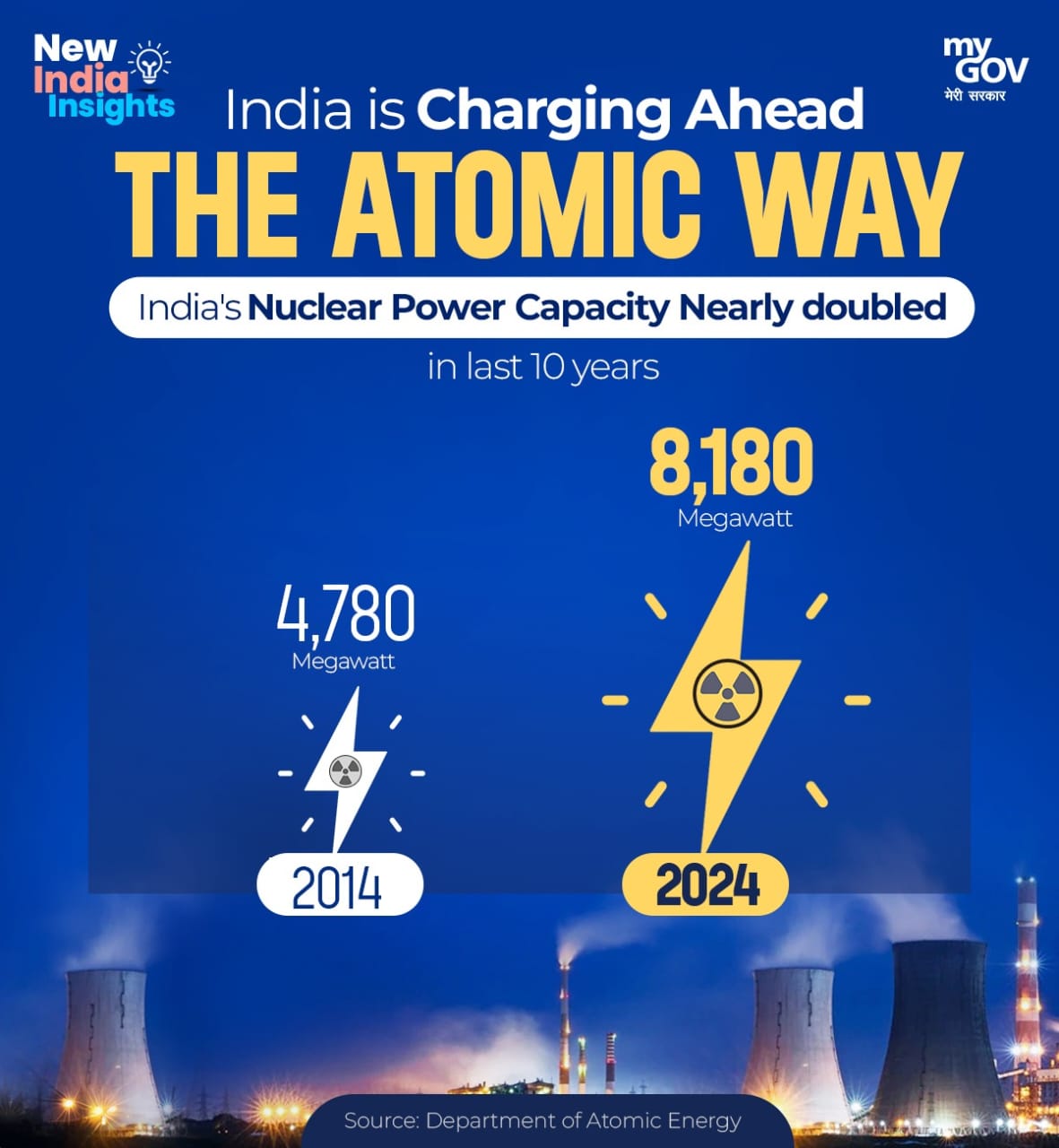
India Doubles Nuclear Power Capacity in 10 Years, Eyes Tripling by 2032
New Delhi: India’s nuclear power generation capacity has nearly doubled over the past decade, rising from 4,780 MW in 2014 to 8,180 MW in 2024, as reported in the Parliament.
Union Minister of State (Independent Charge) for the Department of Atomic Energy, Jitendra Singh, shared this progress in the Lok Sabha, projecting an ambitious roadmap to further increase the country’s nuclear capacity to 22,480 MW by 2031-32.

Highlighting India’s commitment to energy self-reliance, Jitendra Singh outlined key reforms, including a revamped power distribution framework. Under this model, the home states of nuclear plants will receive 50% of the generated power, 35% will go to neighboring states, and 15% will flow into the national grid. This equitable distribution policy aligns with India’s federal values while ensuring resources reach where they are most needed.
The minister credited this leap in nuclear energy to transformative steps, such as bulk approvals for 10 reactors, substantial funding support, collaborations with Public Sector Undertakings (PSUs), and selective participation from the private sector. Technological advancements and efficient administrative reforms have further bolstered the nation’s nuclear infrastructure.
Beyond energy production, Singh underscored the versatile applications of atomic energy across vital sectors. In agriculture, nuclear advancements have led to the development of 70 improved crop varieties through mutation breeding. In healthcare, advanced isotopes are enhancing cancer treatment, while in defence, atomic technology has paved the way for cost-effective, lightweight bulletproof jackets.
Singh also highlighted India’s vast thorium reserves, which account for 21% of the global total. Indigenous projects like Bhavani are in progress to leverage this abundant resource, aiming to reduce reliance on imported uranium and other materials.
Acknowledging challenges in atomic energy projects—such as land acquisition, forest clearances, and timely equipment procurement—Singh reiterated the government’s determination to overcome these hurdles. With nine atomic power projects currently under construction and several more in the pipeline, the expansion of India’s nuclear energy sector remains a national priority.
Reflecting on historical milestones, Singh credited post-2014 leadership under Prime Minister Narendra Modi for driving progress, citing projects like the Kudankulam Nuclear Power Plant as examples of successful initiatives gaining momentum.
Jitendra Singh emphasized that India continues to uphold its commitment to the peaceful use of nuclear energy, echoing the vision of Homi Bhabha. He concluded by reaffirming India’s focus on energy sustainability, innovation, and growth, with nuclear energy playing a crucial role in the nation’s journey toward self-reliance and progress.
0 Comments:
Leave a Reply